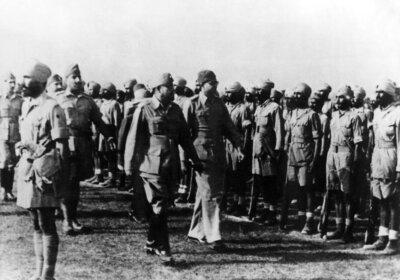The British Royal Automobile Club and the Automobile Club of France say that Nicholas Joseph Cugnot of France made the first car in 1769. Why do historical records say that Gottlieb Daimler or Karl Benz came up with the idea for the car? Modern cars came into being when Daimler and Benz made gas-powered cars that worked well and were useful. Daimler and Benz both made cars that were modern for their time. Neither one of them made “the” car.
Let’s Take A Look At The Timeline Of The Evolution Of Cars
The First Lap Of Evolution
In 1680, a Dutch scientist named Christian Huygens came up with the idea of a gunpowder-powered internal combustion engine, but he never built it.
In 1807, a Swiss man named Francois Isaac de Rivaz comes up with an internal combustion engine that uses hydrogen and oxygen. Rivaz made the first car with an internal combustion engine. His idea didn’t work out.
Samuel Brown made a Newcomen steam engine that ran on gas and drove a car up Shooter’s Hill in London.
In 1858, an engineer from Belgium named Jean Joseph Étienne Lenoir gets a patent for a double-acting, electric spark-ignition coal gas engine. Lenoir put a new engine on a three-wheeled cart and went fifty miles in 1863.
Alphonse Beau de Rochas, a French civil engineer, gets a patent for a four-stroke engine, but he doesn’t build it (16 January 1862).
In 1864, the Austrian engineer Siegfried Marcus builds a one-cylinder engine with a crude carburetor that can move a 500-foot load. After that, Marcus made a 10-mph car that some historians think was the first gasoline-powered car in the world (however, read conflicting notes below).
In 1873, George Brayton makes a kerosene engine that runs on two strokes. (two pumping cylinders outside the engine) First safe and useful oil engine
Eugen Langen and Nicolai August Otto made changes to the gas engine that Lenoir and de Rochas had made in 1866.
In 1876, Nicolaus August Otto made a four-stroke engine and got a patent for it.
Sir Dougald Clerk makes the first successful two-stroke engine.
Edouard Delamare-Debouteville builds a single-cylinder, four-stroke engine that runs on stove gas in the year 1883. Debouteville’s Delamare ideas were ahead of those of Daimler and Benz at the time, at least on paper.
Gottlieb Daimler made the first vertical cylinder and carburetor for a gas engine in 1885. (Patent date: 1887) Daimler used this engine to make a two-wheeled “Reitwagen” and a four-wheeled car a year later.
On January 29, 1886, Karl Benz gets the first patent for a car that runs on gasoline.
In 1889, Daimler makes a four-stroke engine with valves that look like mushrooms and cylinders that are angled in a V shape.
Wilhelm Maybach made the four-stroke, four-cylinder engine in the year 1890.
Almost all of the people listed above who designed engines also designed cars, and a few of them went on to be well-known manufacturers. These and other early people made improvements to the technology of internal combustion vehicles.
Why Nicholas Otto Is Important
Nicholas August Otto made a great engine that ran on gas in 1876. Otto made the first four-stroke internal combustion engine that worked, and he put it in a motorcycle. Otto’s four-stroke engine was used in all cars that used liquid gasoline after him.
Benz
Karl Benz made the first practical car with an internal combustion engine in 1885. On January 29, 1886, Benz got a patent for the first car that ran on gasoline. In 1891, Benz made his first car with four wheels. By 1900, Benz & Cie. was the world’s largest car company. Benz was the first company to combine the engine and chassis into one unit.
Daimler Gottlieb
Gottlieb Daimler and Wilhelm Maybach built the modern gas engine based on Otto’s internal combustion engine in 1885. Otto owned a part of the Deutz Gasmotorenfabrik with Daimler in 1872. Daimler was in charge of the company’s technical side. The first car was made by either Otto or Daimler.
In 1885, Daimler-Maybach made an engine that was small, quick, gas-injected, and vertical. The engine changed how cars worked because of its size, speed, and efficiency. On March 8, 1886, Daimler put his engine in a stagecoach and made the first car with four wheels. Daimler is known as the first person who made an internal combustion engine that worked.
Panhard And Levassor
Before they started making cars, Rene Panhard and Emile Levassor worked together to make machines for working with wood. In 1890, the first car was made with a Daimler engine. Edouard Sarazin hired the team because he had a licence to use Daimler’s patents in France. Sarazin got a licence in France to make and sell Daimler engines. In addition to making cars, the partners improved the design of the body.
Charles and Frank Duryea
Charles and Frank Duryea made the first commercial vehicles in the United States that ran on gasoline. In Springfield, Massachusetts, in 1893, the brothers built the first car they ever made. By 1896, the Duryea Motor Wagon Company had sold thirteen Duryea limos. They continued to be made until the 1920s.
Olds Ransome
The first car made in the United States on a large scale was the 1901 Oldsmobile Curved Dash (1864-1950). By making the assembly line, Olds started the car business in Detroit. In 1885, he and his father set up a factory in Lansing, Michigan, to make gasoline and steam engines. Olds made the first steam car in 1887. Olds moved to Detroit in 1899 to start a company that made cheap cars. This company was called Olds Motor Works. From 1901 to 1904, he made the most cars in the United States. He made 425 “Curved Dash Olds” during that time.
Ford
Henry Ford, who lived from 1863 to 1947, made the first assembly line with a moving belt at his factory in Highland Park, Michigan, in 1913 and 1914. Less time on the assembly line cut the cost of making cars. In 93 minutes, the Model T was put together. In June 1896, Ford made the “Quadricycle,” and in 1903, he started the Ford Motor Company. This was his third business that had to do with cars. After adding moving assembly lines in 1913, Ford became the biggest car company in the world. In 1908, Ford released the Model T. By the end of 1927, 15 million Model Ts had already been made.

Evolution Of Cars
Cars Today
Modern cars that have Bluetooth, hard drives, advanced safety systems, GPS, WiFi, and can parallel park themselves are very important. Even though it seems crazy, it’s true. Things that were once a luxury (or didn’t exist at all) in cars are now commonplace. And driverless cars, which used to be thought of as something out of science fiction, are almost here. It’s amazing how far cars have come and how much further they will go.























Leave a Reply